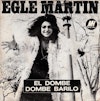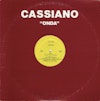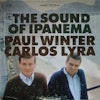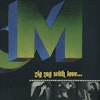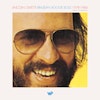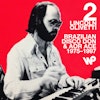Introdução
Tim first gained public attention in 1970 as Brazilian popular music approached a high-water mark of creativity and popularity. Export-ready artists like Elis Regina, Chico Buarque, and Milton Nascimento were delivering top-shelf Brazilian pop, while tropicalists Caetano Veloso, Gilberto Gil, and Os Mutantes were entertaining the college set with avant-garde fuzz poetry. Enter Tim Maia with a cannonball into the pool, knocking Elis off her air mattress and drenching a lounging Caetano in his Speedos. Even samba-soul king Jorge Ben had to pause mid-strum to wipe down his guitar. It was the only dive Tim knew.
Before Tim Maia, there was no shortage of Afro-Brazilian musicians, singers, or composers, but they were typecast as happy-go-lucky samba singers, and few had any meaningful control over their own careers. Despite similar demographics and colonial history, Brazilian racism is distinctly different than the Northern variety. Beginning in the late 1960s, the U.S. civil rights movement made its way to Brazil through the worldwide exposure of outspoken Black American celebrities, such as James Brown and Muhammad Ali. Through these international celebrities, Black Brazilians began to change the way they viewed their role in traditional Brazilian society. Tim Maia was the first Black Brazilian musician to embody this new approach to race.
Prior to the 1970s, average White, urban Brazilians imagined themselves living in a harmonious melting pot of European, African, and indigenous heritage, what the famous Brazilian sociologist Gilberto Freyre called “racial democracy.” The overwhelming success of Tim’s first albums announced a new style of Black Brazilian singer, one that could tackle a James Brown tune with confidence and power, and still deliver a samba or a bossa nova without sacrificing any authenticity. Alongside a wave of civil rights activists, DJ crews, and musicians, Tim Maia helped to define a modern Black Brazilian identity that did not accept mass culture’s tightly circumscribed role for Afro-Brazilians.
Tim wasn’t the first Brazilian singer to sing soul music, but he was the first that really channeled the emotional intensity of the style. While Wilson Simonal and Jorge Ben merely experimented, Tim’s dedication to the new style helped build a movement that would flourish throughout the ’70s and eventually inspire such genres as baile funk and Brazilian hip-hop in the ’80s and up until today.
From the first moment Tim heard American rhythm and blues over the radio as a chubby kid in the lower-class northern suburbs of Rio de Janeiro, he knew he was destined to sing this music. Tim’s vision was singular, and despite innumerable setbacks and rejections, he always continued to write, record, and entertain, up until the very end. He passed away a week after collapsing onstage.
I don’t smoke, I don’t snort coke, and I don’t drink, but sometimes I lie a little.Tim Maia
TIÃO MARMITEIRO
The eighteenth out of nineteen children, of whom only twelve survived birth, Sebastião Rodrigues Maia was born in Tijuca, Rio de Janeiro, on September 28, 1942. Tim’s family made a decent living in this lower-class neighborhood delivering boxed lunches to retirees. As soon as Tim was old enough, he began delivering lunches, which is where he picked up his nickname “Tião Marmiteiro.”(3) Tim was a horrible delivery boy, as he would make regular detours to play with friends, neglecting his rigid delivery schedule. Tim’s first job foreshadowed not only his inability to take direction, but also his insatiable appetite, as his shrinking pants betrayed his regular habit of snacking on the meals he was meant to deliver.
A musical prodigy, Tim was singing by age eight, enrolled in a music academy by twelve, and formed his first band at the age of fourteen, Os Tijucanos do Ritmo (the Tijucans of Rhythm). Tim was the first one of his friends in the neighborhood to learn how to play guitar, so he taught the other members of the Matoso Street gang, including future Brazilian superstars Roberto Carlos and Erasmo Esteves (later known as Erasmo Carlos). Hanging out in the neighborhood, Tim and Erasmo devoured American rock and roll and the new revolutionary bossa nova sound in equal parts. Tim and Erasmo referred to each other as “Tim Jobim” and “Erasmo Gilberto” in reference to the rising bossa nova stars Antonio Carlos “Tom” Jobim and João Gilberto.
Tim’s second band was far more successful. The Sputniks included Erasmo on guitar and Tim on drums. The band gained the attention of rock-and-roll impresario Carlos Imperial, who put the two youths on his radio show, Os Brotos Comandam.(4) The show featured live performances by the best of Rio’s musical youth, including many of the Matoso gang and many other soon-to-be stars of the Jovem Guarda scene.5 On the show, the Snakes (Erasmo’s next band without Tim) backed the anonymous “Brazilian Elvis Presley” (Roberto Carlos) and the “Brazilian Little Richard” (Tim Maia).
The death of his father in 1959, the breakup of the Sputniks, and the canceling of Imperial’s radio show convinced the young Tim that it was time for a new scene. He had always talked about traveling to the United States, but his father was vehemently anti-American, so with nothing left to keep him in Tijuca, he planned his escape to the U.S. Tim saved money and convinced the naïve neighborhood priest to cover what he lacked, while lying to the immigration officials that he was participating in an exchange program to study television production in New York. He arrived in New York City unable to speak a word of English, only seventeen years old, with twelve dollars in his pocket, and no one to greet him.
JIMMY THE BRAZILIAN
Tim’s only plan was to find a family friend who had married an American and was now living in Tarrytown, New York, in Westchester, about a thirty-minute train ride from Grand Central Station. Of course, the O’Meara family had no idea Tim was coming, so when he arrived they reluctantly hosted him until he found a place of his own. His soon-to-be bandmate in the Ideals, Roger Bruno, recalled that after leaving the O’Meara household, Tim never really had his own place but just couch-surfed with friends and bandmates.
Over the next four years, Tim worked as a pizza delivery boy, a short-order cook, a janitor at an insane asylum, and a snow shoveler. Soon after arriving, he traded the impossible-to-pronounce “Tião” (pronounced chee-ow) for Jimmy, and then finally, Tim. As he would recall later in life, “I took my course in malangragem and drugs in the U.S.(6) I learned everything fast there because everyone snorts, smokes pot, screws, drinks booze and pops pills.”(7) Roger, only sixteen at the time and just earning his stripes in the rough-and-tumble Tarrytown R&B scene, recognized from early on that his new bandmate had more than just musical talents: “Let’s just say he always had a way to make money. Believe me, Tim was an outlaw.”
Why Tarrytown? Maybe it was because he first got his start there in Tarrytown, or it could have been the thriving jazz and R&B scene bubbling up in this and the neighboring mixed-race Westchester river towns, or maybe it was that he thought he found something special in the vocal group he joined, the Ideals. As Roger recalls, the five-member vocal group came together effortlessly: “There was something about Tim where he and I musically related so we got to be really good friends and then we started writing and then we wrote ‘New Love,’ which was like the second song I ever wrote.” The song, which was later recorded for Tim’s fourth solo album more than ten years later in 1973, was a mix of R&B and bossa nova. “He turned me on to João Gilberto,” Roger remembers. “He was a real João freak and it was about the time when bossa nova was hitting in the states and we wanted to do something with bossa and pop music. So we wrote that song [‘New Love’] and decided to do a demo on it.”
At the time of writing this article, Roger was in the process of resolving outstanding legal issues related to the recording, but we do know that it featured Roger on lead vocal with Tim and the other four vocalists singing backup. Most interesting is the presence of two heavyweight professional musicians, drummer Milton Banana and bassist Don Payne. Milton Banana was in New York for the legendary 1962 bossa nova concert at Carnegie Hall. In his typical style, Tim tracked down this renowned drummer (known as João Gilberto’s favorite) at his hotel and invited him to play on the Ideals’ session. Tim (and Roger too) was convinced that this song might be the breakthrough they were hoping for, and it was largely Tim’s intensity and drive that pushed the group to record this demo. Contrary to his reputation later in life, Roger remembers that Tim “always looked good, he was always punctual and he was very serious about the music. If someone was singing out of tune, he would screw up his face and give him a dirty look.”
In 1963, Tim was arrested in Daytona Beach, Florida, with some other Black youths. The cops pulled over their stolen car and found the deviants in possession of marijuana. He was put in jail for six months before being deported back to Brazil. Roger Bruno remembers receiving a phone call from Tim in jail, which wasn’t the first time, but this time he was in Florida, and enough was enough: “He was very unhappy that we didn’t bail him out. For him that was it. His hopes for a career in the U.S. were gone.”
TIÃO MACONHEIRO
Tim returned to Brazil with only the clothes on his back. He called his mother from the airport to pick him up, telling his family and friends that he came back to Brazil in order to avoid being drafted to fight in Vietnam. With his old bandmates from the Matoso gang now dominating the pop airwaves as the leading lights of the Jovem Guarda scene, it was clear to Tim that Rio de Janeiro was not the place to stage his assault on the Brazilian recording industry. The action was in São Paulo.
Actually getting in touch with Roberto and Erasmo proved to be nearly impossible with the paparazzi and Beatlemania-like crowds of adolescent girls that surrounded the duo at all times. Convinced that Roberto Carlos owed him for inviting him to join his band back in Tijuca and for teaching him how to play guitar, Tim stopped at nothing to talk to Roberto. He even hid in the parking lot of the idol’s apartment building, waiting for him to come home to deliver his ultimatum, only to find Roberto was out of town.
Only after a chance encounter with Roberto’s girlfriend did Tim finally secure a meeting with his old bandmate. After listening to Tim’s demo, Roberto recommended him to his producer, which resulted in Tim’s first single in 1968. The single tanked due to a lack of promotion and the studio’s old-fashioned production style. Having been baptized in soul music up north, Tim knew how he wanted his songs to sound, but the technicians were accustomed to recording sambas and pop-rock numbers and had no idea how to produce a soul record. The sessions ended badly, and Tim didn’t even bother to listen to the final tapes.
Despite his initial failure in the recording studio, Roberto invited Tim on his TV show, Jovem Guarda. “He entered the scene,” Nelson Motta recalled, “a fat mulatto with black-power hair, wearing a black coat and with the face of a criminal just let out of jail.”(9) Roberto’s frenzied female fans usually applauded anyone and everyone who took the stage, but Tim’s appearance and foreign sound left them speechless and confused. His performance ended like many of his performances many years later as a superstar, with him marching off the stage complaining about the poor sound quality. His breakthrough would not be as easy as he hoped.
His previous taste of fame on the radio before heading to the States didn’t translate to the current medium of TV, as Tim’s impressive girth and skin color were both strikes against him. The third strike was less noticeable on TV, but was no secret to promoters and the larger music scene: drugs. Tim’s only priorities were music and partying, and he gained a reputation for both. Roberto and Erasmo were no doubt focused on similar goals, but they had more than one change of clothes and were more discrete about their drug use.
Another single, this time sponsored by Erasmo Carlos on his record label, tanked. Tim managed to sneak in one of his original tunes, “Você,” for an album of soul cover tunes (for which he translated the lyrics) by Eduardo Araujo, but the album sold poorly.
Tim’s determination to bring the sound and spirit of soul music to Brazil was initially a liability, because no one was singing this music. Tim was at least three years ahead of the curve, but that didn’t stop him from converting friends and strangers along the way. Tim made fast friends with the three Paulista youths soon to be known as Os Mutantes.(10) Sérgio Dias remembers that “there was a bunch of guys in this hit parade [television show], in terms of musical styles, right—and that’s where we met Tim. He had just arrived from America, so when he started to sing, we were so much into the Four Tops and all those guys, and we knew all the backing vocals. So every time he would sing, we did the backing vocals. So when we went to PolyGram, we introduced him [to the label].”(11) Show business in Brazil, or anywhere else for that matter, is anything but kind to overweight racial minorities. Tim jumped up and down on the sideline for years watching less-talented and lighter-skinned friends struggle to take his songs up the pop-charts.
FINALLY, TIM MAIA
Tim’s first real taste of success came when Roberto Carlos recorded his song “Não Vou Ficar,” for his 1969 self-titled album, which meant both royalties and increased exposure. With just enough momentum, and thanks to the Mutantes’ introduction, Tim got a chance to record a third single, this time for Polydor, and this time they finally got the sound right.
Nelson Motta was getting ready to produce his first album with the extremely popular singer Elis Regina and was in search of some interesting new songs when a colleague and Tim’s producer played him the unreleased single “Primavera” backed with “Jurema.” Motta was blown away by Tim’s style and invited him into the studio with Elis to try out some songs. Elis fell in love with the English-Portuguese hybrid, “These Are the Songs.” What was supposed to be merely a writing credit evolved into a duet with one of Brazil’s biggest stars.
“These Are the Songs” immediately shot Tim into the stratosphere. While not necessarily a brilliant song, or even a hit, it was on an album of one of the most celebrated artists in Brazilian history, and anyone who heard the song realized that Elis’s duet partner was in possession of an entirely new sound. According to Nelson Motta:
Here was something absolutely new. Until then Brazilian music was divided into nationalist MPB, tropicalismo and international rock.(12) All really white and really English. Tim Maia changed the game, introducing modern black music from the U.S. to national pop music, linking funk and baião, bringing soul closer to bossa nova and opening windows and doors to new forms of music that were not tropicalist, nor MPB, nor rock n’ roll: they were quintessentially Brazilian. They were Tim Maia.(13)
In 1970 and nearly thirty years old, Tim recorded his breakthrough solo album. The album was the result of sheer determination, natural talent, and his irresistible personality. Like the best purveyors of diasporic soul music, Tim’s amalgamation of R&B with traditional music was effortless. His vocal style, like that of Elis Regina and another young mulatto singer, Milton Nascimento, abandoned the hushed tones of bossa nova, preferring a more dramatic and soaring delivery reminiscent of older vocal styles, such as the samba canção and boleros of the 1950s. And his compositions, or those of his immediate circle (including soul supporters Cassiano and Hyldon), were first rate. Tim’s first album spent twenty-four weeks at the top of the pop charts and turned Tim into the star he always wanted to be.
In spite of Tim’s popular and critical success, loads of money, bottomless whiskey bottles, endless joints, and hordes of adoring female fans, he always wanted more. In his quest to find a deeper truth, or at least a laugh, Tim built a home recording studio, experimented with every drug imaginable, and even tried to “open the minds” of the uptight employees at his record label, Philips, with a sheet of LSD he brought back from a trip to London. Tim approached each and every Philips employee, beginning with the accounting department, which needed more immediate “salvation,” asking, “Do you know what this is? This here is a divine gift that will open your mind, improve your life and make you happier. It doesn’t have side effects, it’s non-addictive and it won’t make your hair fall out—it only does good. It’s called LSD and you take it like this...”(14)
Tim was a regular drug user, particularly of marijuana, which he asserted had saintly effects of peace and artistic inspiration. When recording at Philips, everyone knew when Tim was on break, because the smell of marijuana wafting out of the air vents betrayed Tim’s favorite joint-smoking spot—the central air conditioner room. But this was classic Tim Maia: even when he was taking a break, he was creating a scene.
Ed Motta, Tim’s nephew and the heir to his uncle’s physical and musical style, was only a child during Tim’s early career, but he remembers that “the first time I listened to American funk music and saw the characters and the atmosphere of soul music, that just looked to me like my uncle Tim and his friends. He was freaky, very wild, always doing drugs and having crazy sex. Because of his lifestyle, my family would tell me he’s everything you can’t be in your life.”(15)
Tim’s first four albums on Polydor reveal an artist stretching out and challenging the boundaries of Brazilian pop music. Tim’s first albums consisted of straight-ahead soul music sung in Portuguese (and at least one song in English on each album) as well as fusions of soul with traditional Brazilian styles like forró and baião. It wasn’t until his fourth album, released in 1973, that samba worked its way into recordings on such classics as “Réu Confesso,” “Over Again,” and “Gostava Tanto de Você.” With the help of cream-of-the-crop session musicians and songwriters, Tim blazed the way for a unique fusion of Brazilian styles and American soul music, something timeless and wholly original.
With their accessible themes and irresistible hooks, Tim’s first four albums were hugely successful, single-handedly drawing the blueprint for the Brazilian soul music of the 1970s. If Tim had stopped recording after his first four albums, he would still be remembered as a major figure in Brazilian pop music. Thankfully, he didn’t stop, but he did change directions.
TIM MAIA RACIONAL
Following his fourth hit album on Polydor, Tim was one of the biggest stars of Brazilian music, so, naturally, he decided to push his luck with the Philips execs and demanded that his next recording be a double album; after all, it was the ’70s. Philips chief Andre Midani knew that Tim was equal parts gold mine and liability and released him from his contract, and not a moment too soon.
With carte blanche access to RCA’s recently remodeled twenty-four-channel studio with German microphones and full air-conditioning, Tim and his band started laying down a set of tracks that Nelson described as “funk and soul mixed with samba and tempered with Latin and Caribbean flavors.” But before he could lay down the vocal tracks, something unexpected happened.
While tripping on some mescaline, Tim stopped by friend Tiberio Gaspar’s house, but the host was just stepping into the shower, leaving Tim alone in the living room. With the mescaline kicking in, he picked up a book on the coffee table and started thumbing through it. The book was titled Universe in Disenchantment. Two days later Tim called his guitarist and second-in-command, Paulinho Guitarra, to talk to him about something extremely important. Paulinho found Tim engrossed in a book and eager to share his discovery; he finally had an answer for everything—who we are, where we come from, and where we are going. Paulinho was convinced that Tim was tripping, but Tim continued to explain the following:
We are from a distant and perfect planet and we’re exiled here on earth. Here, we live like animals, dirty and magnetized, suffering in this valley of tears. Our only salvation is rational immunization, which we can achieve through reading [the book] and following its lessons. Only through this can we purify ourselves and be rescued by flying saucers and returned to our original planet: The Superior Rational.(16)
Never one for incremental change, Tim jumped headlong into the cult’s quest for a more “rational” life. His commitment extended to ridding himself of all material possessions: his oven, refrigerator, and even the living room carpet. He cut his hair and shaved his ever-present facial hair and dressed only in white.
“I’ve felt blue, I’ve done so many things wrong, I’ve slept in the street, I’ve asked for help, but I’m learning to understand the good sense: Rational Immunization.” So go the lyrics to one of the songs Tim Maia wrote after accepting the “Rational Culture.” He had already finished recording nearly all of the backing tracks for his next albums, so all he had to do was rewrite the old lyrics and replace them with new ones, extolling the virtues, wisdom, and importance of the Disenchanted Universe.
Serginho Trombone, a longtime band member, recalls that “it was a really crazy phase. Tim was constantly looking to the sky for flying saucers. Worse yet, he managed to convince the entire band to join the sect! We painted all of our instruments white, even the drum set.” Fábio recalled that Tim demanded that every band member was required to read at least thirty pages of the book before each rehearsal.(17)
The RCA executives balked at releasing the albums, no doubt cursing themselves for signing the erratic star. No bother, because Tim finished the recordings at his home studio and released both volumes, Racional Vol. 1 and Racional Vol. 2, on his recently established record label, Seroma, an abbreviation of his given name: SEbastião ROdrigues MAia. Band members distributed the albums themselves, mostly to fellow cult members, with limited success. “Imunisaçao Racional (Que Beleza)” was the only song to receive any radio airplay, partly because its lyrics contained the fewest references to the Racional cult’s unique vernacular.
Tim’s existential detour was unprecedented. Historically, famous musicians have a reputation for religious flights of fancy: Cat Stevens went Muslim way after he was hitting the charts; Bob Dylan was briefly born again during an artistic dip in the late ’70s; and the Beatles’ foray into spirituality only added to their counterculture credibility; but Tim Maia self-released a double album of extraterrestrial funk at the peak of his fame. Tim’s mission was now to evangelize for the Superior Rational, and he played and performed constantly at the religious sect’s compound in the Rio suburb of Baixada Fluminense. His evangelizing efforts extended to other musical icons. Tim announced that he sent copies of the book, in Portuguese, to James Brown, Curtis Mayfield, and John Lennon, convinced that “the Superior Rational is made so that anyone can understand.” Not necessarily so, it would seem, as Tim received a response from John Lennon: a photo of the ex-Beatle, entirely nude, with a note—“Dear freak, I don’t understand Portuguese. What about LISTEN to this photo? John Lennon.”(18)
At the time, most Tim Maia fans struggled to understand why their fun-loving godfather of Brazilian soul was proselytizing for a fringe cult instead of churning out hits, but, in hindsight, these albums are much more than a curious footnote. According to the Brazilian music critic Tarik de Souza, “Racional Vol. 1 is proof that Tim Maia was a genius. He succeeded in making the unmusical musical: taking a dense text devoid of melody and rhythm and creating a timeless work.” The first volume plays like a radio show, with introductions before some songs, such as the a cappella introduction of “You Don’t Know What I Know.” Every word on the album urges the listener to explore the wisdom of “Rational Culture,” such as the soulful ballad “Contato Com O Mundo Racional” where Tim pleads for a chance, just one chance, to have contact with the “rational world.”
For the first time in decades, Tim was eating healthily, abstaining from drugs and alcohol, and recording music nonstop. Listening to his Racional albums, it’s clear that Tim was stretching out musically and vocally, never sounding better than he did on these recordings. After a blowout argument with cult founder Manoel Jacintho Coelho, Tim severed his relations with the cult just as suddenly as he initially dove in, but not without some painful soul searching. According to guitarist Paulinho Guitarra, Tim “was screaming from his window to all that passed below that everything in the universe was a lie.”(19)
Once Tim set his mind to a task he was all in, but just as soon he could change his mind again, as if nothing had ever happened. Emerging from the Rational Superior’s spell, he confided in Fábio that “I lost everything, even my prestige!” Then, moments later, before setting out for burgers and fries, he added quite seriously, “Fábio, some day yet I’m gonna play a show on Jupiter!”(20)
By some accounts, he was only involved with the cult for less than a year, but during that time he completed two of his best albums. Producer and musician Kassin confirms that a recent discovery of tapes, assumed to be have been destroyed by Tim after leaving the cult, reveal that there are at least enough tracks for one more album of Racional recordings that were never released.

TIM MAIA DISCO CLUB
Tim wasted no time returning to his previous “animalistic” tendencies, and he churned out the funk with new fervor. Though he had some catching up to do, his post-Racional albums are all excellent proto-disco funk albums, drawing on the talents of his core band, Vitoria Regia, that emerged alongside Tim from the Racional debacle. The funky philosophizing on “Nobody Can Live Forever” from his self-titled 1976 album reveals Tim’s disappointment in not finding life’s answers in the cult, while “Brother, Father, Sister and Mother” speaks of the human tendency to seek solace in unhealthy ways. A rare single from the same era, “Ela Partiu,” also cloaks Tim’s disappointment and confusion as a break-up song, but it seems to tap into a loss far darker and profound than romantic love.
One of the first recordings following his exit from the cult was an album recorded entirely in English with his eyes on the international market. Having “invested” all of his riches into the cult, he found there wasn’t enough money left over to distribute the record, so it sat in boxes in his closet for two years until he had enough money to release it. Though an excellent album of raw yet romantic funk, it sold the most poorly of any of his albums, no doubt due to its domestic Brazilian release though none of the songs were in Portuguese.
For his next album, Disco Club, Tim ditched his loyal band and gritty sound in favor of a glitzier studio production, a choice that paid off in the form of two disco hits. Like most Black musicians, Tim saw disco music for what it was—syncopated funk music that White people could dance to—and he said as much in an interview following the success of his Disco Club album: “I make Black music. And Blacks need to be convinced that they’re coming to the White world accidentally, in Black galleons. Look, this movement they call ‘Black Rio’: these Blacks are not photocopies of the Americans… You can’t deny that this whole thing goes back to Africa.”(21)
Tim’s return to popularity and success brought with it no shortage of hangers-on and dubious characters looking for favors or trying to interest the star in exotic, expensive, and illegal delights. There was the hawk that Tim purchased and kept in the maid’s quarters until late one night, in the midst of one of his frequent “triathlons” (whiskey, weed, and coke), he decided to pay a visit to his new pet birdie. In his usual “triathlon” uniform—just his underwear—he opened the door, and before he could defend himself, the hawk scratched the hell out of his face and back. After attempting to tackle the bird, he received a vicious pecking. When Tim lunged to open the window to call for help, the bird escaped to freedom.(22)

On another occasion, a stranger showed up at Tim’s apartment offering to sell him a semiautomatic machine gun. Tim liked the idea of having a gun to intimidate dishonest promoters and record-label bosses. He bought the gun and stored it in a paper bag under his bed. A few nights later around 3:00 AM, in only his undies and several hours into another “triathlon,” he thought it a good idea to experiment with the machine gun inside his apartment.(23) The following conversation with his lawyer, Dr. Nelson, took place later that morning:
Tim: Dr. Nelson, they’re trying to break into my house!
Dr. Nelson: Well, call the police.
Tim: But they ARE the police, Doctor.
Dr. Nelson: Well, then call the robbers.(24)
Fábio and Tiberio Gaspar came to his rescue before the cops could break in, where they found Tim sprawled on the floor in his underwear with whiskey spilled everywhere, sobbing with the machine gun in his hand. After uttering some incomprehensible words, he managed to deliver this classic Tim Maia–ism, “The hand that holds the microphone also holds the machine gun.”(25) Tim Maia, original gangster.
Tim followed his Disco Club album with a series of successful dance-oriented albums helmed by Lincoln Olivetti, the Brazilian Quincy Jones. Another independently released album from 1982, Nuvens is an overlooked classic and possibly his best career album. His last great album, Descobridor dos Sete Mares from 1983, returned him to the top of the charts with an even mix of disco and quiet-stormers. The secret to his success, Tim admitted, was always “having a balance: half of my songs are armpit-soakers and the other half are panty-soakers.”(26)
Soon thereafter, the ’80s kicked in: coke, paranoia, and rerecordings of his classic hits turned Tim into a highly profitable, yet unreliable, superstar.
TIM MAIA, THE PUNK OF FUNK
Despite his notoriety for missing shows and sabotaging his own recording sessions, Tim continued to receive invitations to perform and record for the simple reason that when he was sober enough, he could put on a masterful show or record a chart-topping hit. It just depended on what day you caught him and how badly he needed the money. Tim managed to achieve one of the greatest accolades for an aging star: he converted the younger generation. The rising pop star Cazuza referred to Tim as the “Punk of Funk,” elaborating that “Tim Maia is one of the greatest Brazilian artists; he’s the funniest, most disrespectful character and an authentic punk.”(27)
Tim’s self-reliance was an obsession, and his authoritarian control of his career and everything else in his life meant that few individuals could ever really get through to him. One of the few who did was his mother, Dona Maria Imaculada, to whom he dedicated every album. Tim hated to fly—after a dramatic incident involving an airplane bathroom, coke, and turbulence—so he insisted on stopping by his mom’s house before every flight to receive her blessing. On one occasion, Fábio recalls making the usual pit stop on the way to the airport with Tim double-fisting bottles of whiskey and water in the backseat of the taxi. “Tim went up [to his mother’s apartment] stumbling and when he emerged he was calm and smiling.”(28)
Following one of his innumerable comebacks in the mid-’90s, the Brazilian beer company Brahma offered to sponsor a series of concerts throughout the country. In the dressing room before a big show organized by his potential benefactor Brahma, he told the band, “We’re closing a deal for seventy shows across Brazil with Brahma, so let’s kick some ass, let’s do it boys!” But as usual, Tim was his own worst enemy. In the middle of what was a killer show, he experienced a moment of ill-advised honesty and announced to the crowd of fifty thousand: “I’m here doing a show for Brahma, but I actually prefer Antarctica brand guarana.”(29) The seventy shows went to his old friend Roberto Carlos.(30)
It wasn’t until the mid-’90s that Tim Maia made his first visit to the doctor only to learn how much medical trouble he was in. Maybe he knew his time was running out, as he revisited places and themes from earlier in his life. His final albums captured Tim tackling the bossa nova standards to much critical acclaim, and he spent more and more time at home with his menagerie of animals (dogs, goats, cows, but no more hawks) and entertaining the kids from a nearby orphanage.
The year before he died, Tim made a hastily planned trip back to the U.S., his first since being deported, to play a disastrous show to fifty delirious fans in Miami. Following the show, he rented a limo with a Portuguese driver, and he and his partner/secretary re-created his ill-fated Daytona road trip from more than thirty years before. They drove from Florida to New York, taking in the scene and reliving his brief stay as a young man in the U.S.
On March 15, 1998, Tim Maia’s excessive lifestyle caught up with him after collapsing onstage a week earlier. He was fifty-five years old. His contribution to Brazilian music is only recently being fully appreciated as younger musicians and DJs begin to mine the better part of his thirty-year catalog. He redefined what it was to be Black Brazilian. He was one of the first musicians to own his own publishing company and record label, and he managed to hit the pop charts in three different decades. Nelson Motta, Tim’s friend and biographer, said it best: “Tim Maia was the freest person I’ve ever known, because he always did, in every waking moment, only what he wanted to do. Clearly, he paid an enormous price for this, but he did it until the very end.”(31)


























